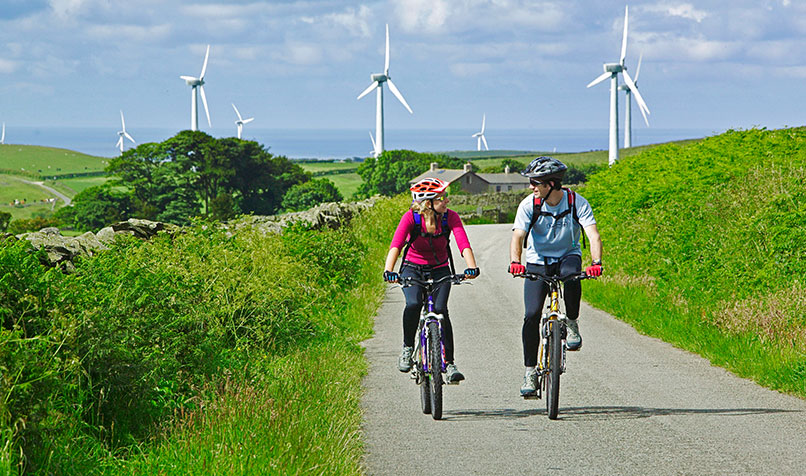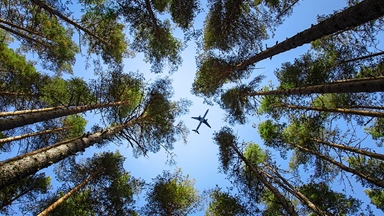Loading component...
At a glance
- More extreme weather events pose an increasing threat to human-made and natural tourism assets.
- Some nations lack the resources and finances to mitigate or respond to climate risks.
- Better management and coordination of the tourism industry’s response to climate risk is required.
A spate of venomous irukandji jellyfish stings off one of Australia’s most beloved islands is a disturbing reminder of the threat climate change poses to the tourism industry.
Sting numbers from the tiny, but potentially deadly, jellyfish are increasing on K’gari (formerly known as Fraser Island), a World Heritage-listed sand island in Queensland that attracts both domestic and international tourists.
The fear is that warmer ocean waters are causing more and more Irukandji to migrate from the tropical waters of far north Queensland, possibly threatening tourism on the state’s south-eastern coast.

Dr Adam Triggs, a sustainability expert at economic consultancy Mandala Partners, says the K’gari scenario is just one example of how climate change could jeopardise Asia-Pacific tourism.
“One of the really big risks to tourism is the reputational effects that can manifest from news reports,” he says. “Even if there are infrequent reports of jellyfish and shark attacks and things like that, it can be enough to reduce tourism in an area.”
Triggs is one of the researchers on a new report, The Zurich-Mandala Climate Risk Index, which assesses the impact of climate change on the Australian tourism industry. It reveals that half of Australia’s top 178 tourism assets are in an elevated risk category, as they face considerable climate change and natural-peril risks.
The modelling also suggests that revenue losses from compromised tourist destinations could risk up to 176,000 jobs in Australia, 65 per cent of which are outside capital cities.
While the research is Australia-specific, Triggs says the implications of climate change could be even worse for developing countries where tourism is “more heavily weighted” to highly vulnerable natural wonders such as beaches.
A vulnerable position
A growing number of Asia-Pacific’s famous tourism sites and destinations are exposed to climate risk — including coral bleaching on Australia’s Greater Barrier Reef, increasingly devastating typhoons in South-East Asia that have ravaged Vietnam and the Philippines in recent years, and rising sea levels that are threatening Bangladesh’s low-lying historical Bagerhat mosques.
In the Pacific, a World Meteorological Organization report states that a “triple whammy” of sea-level rises, ocean warming and acidification is putting islands in peril and threatening the socioeconomic viability of people who rely on tourism to live.
Randy Durband, CEO of the Global Sustainable Tourism Council, says a tourism industry that relies on stable and predictable environmental conditions is “extremely vulnerable” to the forces of climate change, which are causing more frequent and severe weather events.
"We’re doing a once-in-a-generation upgrade of our airfield that involves milling the asphalt on the runway. Instead of just sending that to landfill, we’re using it to construct our new car parks — that’s 27,000 tonnes of asphalt being recycled. These sorts of initiatives lead to good economic and environmental outcomes."
He warns that short-term thinking has resulted in too few nations or tourism operators responding appropriately to the threat. Instead, they may alter tourism products, change destinations or simply say to prospective tourists that people “can’t go here anymore”. “I don’t think there’s been enough adaptation at all,” Durband says.
With tourism forecast to comprise more than 11 per cent of the Asia-Pacific economy by 2034, a value of US$5.83 trillion, the stakes are high to protect the industry. For now, Triggs says climate change and its dampening effect on tourism is hurting both the real economy and the financial system in some South-East Asian nations.
“Tourism is a big source of employment for so many people in Asia, so it really impacts the real economy. But then you’ve got this financial side whereby a lot of South-East Asian countries rely on tourism as their main source of foreign exchange.”
The upshot is that they can then struggle to fund crucial pillars of their economies.
Fight or flight
Not only are priceless natural as sets under threat from climate change — crucial infrastructure such as airports, scenic roads and railways are also at risk of accessibility issues, supply-chain disruption, adaptation costs and reputational damage.

In Australia, at Hobart Airport, the aviation gateway for Tasmania’s highly regarded tourism sector, CFO Kate Gillies CPA and her team are determined to manage transition risk and contribute to the sustainability of the sector on two fronts.
First, the airport has a Climate Change Adaptation Plan in place to help ensure that its facility is as resilient as possible and able to support tourism across the state. Second, as part of the aviation sector, it wants to do its best to reduce its own environmental footprint and work with its partners to help them do the same.
“We’re focused on embedding sustainability in everything we do,” Gillies says. “For example, we’re doing a once-in-a-generation upgrade of our airfield that involves milling the asphalt on the runway.
Instead of just sending that to landfill, we’re using it to construct our new car parks — that’s 27,000 tonnes of asphalt being recycled. These sorts of initiatives lead to good economic and environmental outcomes.”
To reduce the prospect of disruptive flooding, a common problem for many airports located on low-lying land, Gillies says that any new infrastructure will be developed in conjunction with the latest flood modelling, to protect these assets.
This sustainable approach includes working with rental-car partners at the airport to ensure that there is sufficient electric-vehicle (EV) charging infrastructure. “If you come to this clean, green state, you don’t want to have to get into a petrol car. Having electric vehicle options is important.”
Gillies says other Hobart Airport initiatives include working with food and beverage partners to compost food waste from the terminal, and adopting indigenous cultural practices that do controlled burns of grass on site, rather than slashing it.
As the tourism industry responds to calls for greater sustainability, Durband says any measures to protect the environment should be reasonable and rational, noting that the “flight-shame movement” that developed before COVID-19 could conceivably rise again.
Avoiding air travel, he says, would be a disaster for many South-East Asian and Pacific economies that rely on coastal tourism. “What we say is that if you don’t fly to Pacific islands where 30 to 40 per cent of GDP is based on tourism, they then become double victims of climate change.
The ocean levels are already taking away their land and, in a resource-free environment where they have less minerals or agriculture, they must have tourism.”
Although “flight-shaming” is on the radar for Hobart Airport, Gillies believes Tasmania’s status as a “green destination” holds it in better stead than most. “We’re hopeful that Tasmania’s reputation and location means people will still want to fly to here.”
Some players within the tourism industry are moving to embrace both adaptation and mitigation strategies to respond to climate change challenges. The former includes investing in resilient infrastructure such as seawalls and flood defences.
The latter includes airlines, cruise companies and hotels investing more heavily in energy-efficient technologies, alternative fuels and carbon-offset programs.
“I’d like to see the whole aviation industry move more aggressively on sustainable aviation fuel development and then come to a consensus, choosing two or three [types of fuel] that are going to be the main ones,” Durband says. “Then producers will start producing that type of fuel in a big way.”
Ways to begin

Coordinated and well-considered solutions are seen as the best way to promote sustainable tourism.
This may include engaging in climate-change-scenario planning to help government and tourism operators make more informed decisions; putting more resources and capital into climate-resilient tourism systems; developing overarching tourism policies and guidelines that focus on climate change mitigation; and promoting the decarbonisation of tourism facilities and services.
Triggs concedes that many South-East Asian and Pacific nations may lack the capital to make some sustainable interventions.
For instance, struggles to source finance make it difficult for the government to fund major tourism-related risk-management and infrastructure projects.
Greater adoption of insurance could allow developing countries and tourism facilities to recover faster in the event of a natural disaster, according to Triggs. Whereas a country such as Australia is highly insured, Pacific and South-East Asian nations often lack insurance protection.
"I’d like to see the whole aviation industry move more aggressively on sustainable aviation fuel development and then come to a consensus, choosing two or three [types of fuel] that are going to be the main ones."
“This means that the impact of these climate perils is felt much, much more by people who are not only having to recover and rebuild, but who have also potentially been bankrupted by some of these events as well.”
Prevention of climate-related disasters should also be a greater focus. In Australia, every dollar spent on disaster resilience and mitigation delivers a return nine times over. Triggs notes that “we need to focus a lot more on prevention … and strengthen our processes to respond when something does go wrong.”
There is a bigger role to play, too, for data analysis that identifies climate risks and informs smarter positioning and management of tourism infrastructure.
Smart traveller: The new look of international travel
Asset management
One of the key challenges for jurisdictions is striking a balance between deploying human-made interventions to protect tourism destinations, without destroying their beauty.
For example, while sea walls can safeguard beaches and tourism infrastructure from erosion and destruction, they can turn a tourism asset into an eyesore. An alternative could be to roll out sustainable infrastructure such as elevated walkways or flood barriers that are designed to harmonise with the natural landscape.
These structures could protect against erosion, flooding or storm surges while minimising any visual impact. Simple acts such as planting more trees in coastal areas and promoting reforestation programs could also help.
Deploying advanced monitoring systems, including early-warning sensors, could also result in faster responses to natural threats without resorting to intrusive infrastructure.
As he ponders the future for tourism in an era of climate change, Durband calls on governments to devote more capital and resources to the smart management of tourism destinations in a world where the population has jumped from 4 billion to more than 8 billion in the past 50 years.
“We can’t just promote tourism destinations — we have to manage them.”
Eco-tourism is on the money

Sustainable tourism is no longer just about safeguarding the environment. It is a significant financial driver for tourism operators.
The annual global eco-tourism market, valued at about US$248.17 billion in 2024 and projected to grow to US$945.34 billion by 2034, is thriving on the back of climate-conscious tourists who are seeking sustainable travel options.
Global Sustainable Tourism Council CEO Randy Durband says more can be done in the Asia-Pacific region and elsewhere to speed up the sustainability transition.
He cites more renewable energy use in hotels and resorts; greater rollout of EV or hybrid vehicles by rental companies and tourism operators; superior waste-management approaches; and more sustainable use of air-conditioning.
The wider rollout of universal EV charging stations will be especially crucial to deliver sustainability gains in the transport sector. “We can move much more aggressively on clean energy vehicles and hydrogen” Durband says. “Those prices are coming down.”
His final plea is for governments to introduce stricter regulations to fast-track clean energy options within the sector. “It’s unreasonable to say, ‘Do it tomorrow’, but it’s totally reasonable to say, ‘This is going to be required five years from now, so get going’.”

